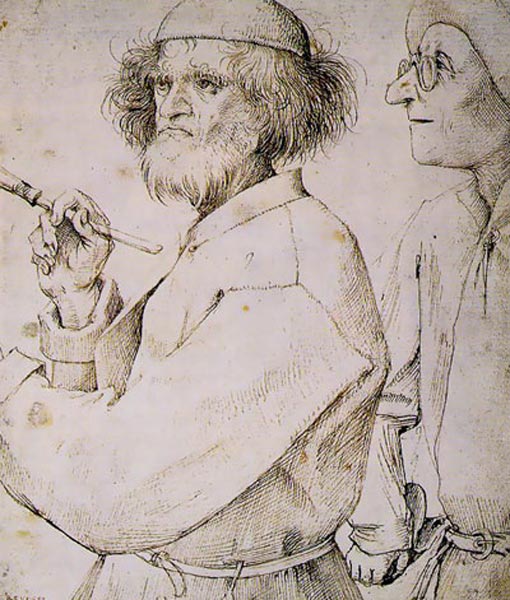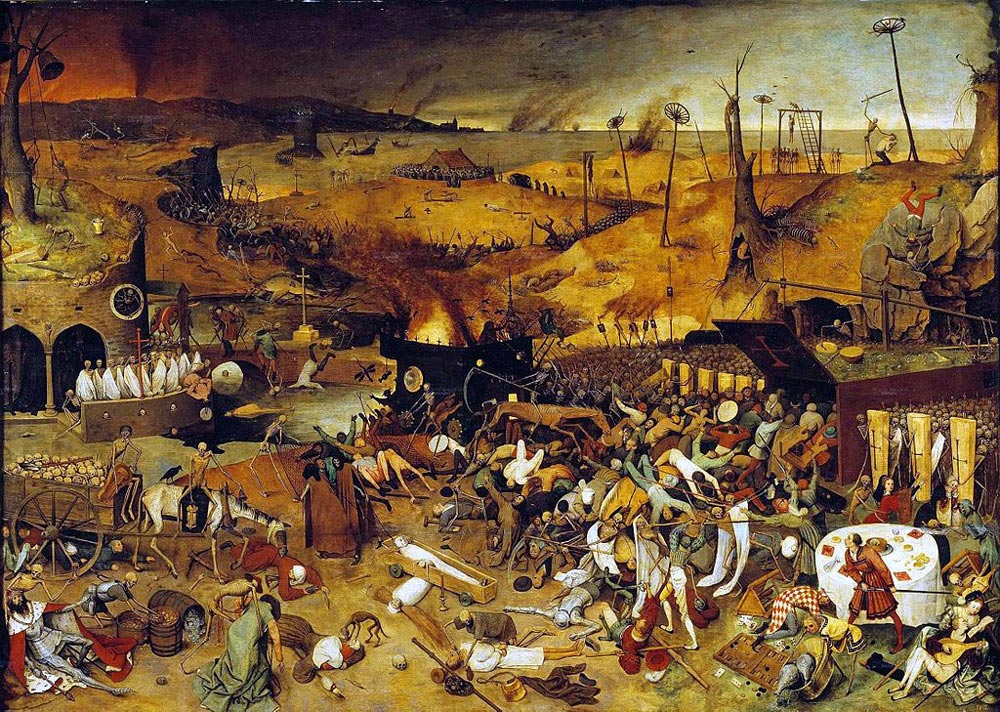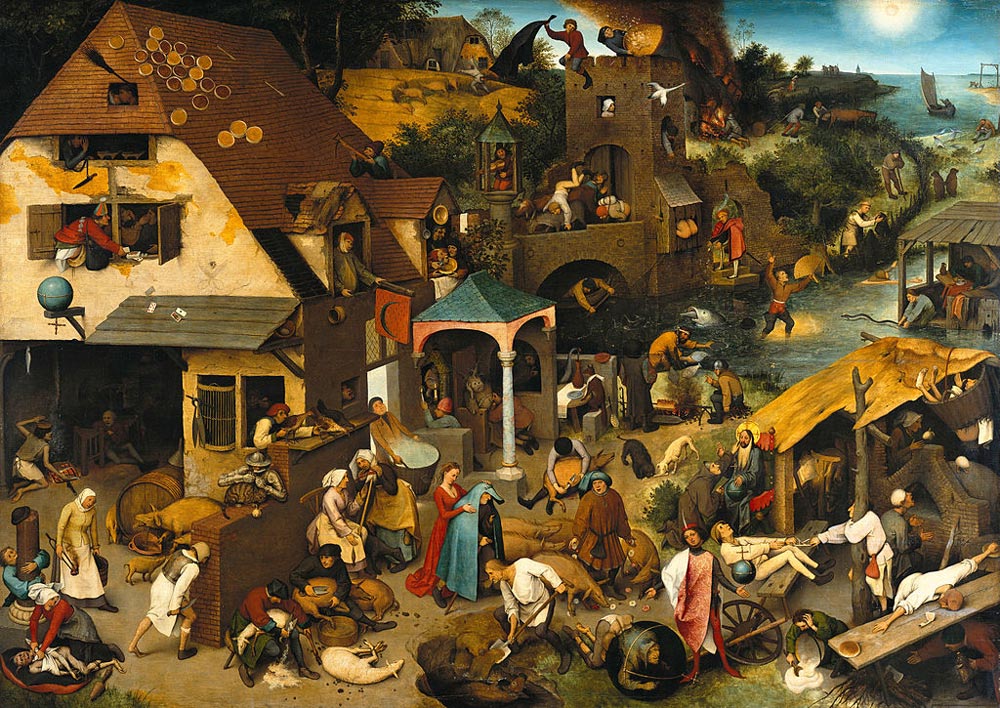| Pieter Bruegel the Elder | |
|---|---|
 |
|
| Born | c. 1525 Bree, Duchy of Brabant, Habsburg Netherlands (now Belgium) |
| Died | Sep. 9, 1569 (at age 44) Brussels, Duchy of Brabant, Habsburg Netherlands (now Belgium) |
| Movement | Dutch and Flemish Renaissance |
| Field | Painting, printmaking |
| Works | View Complete Works |
Pieter Bruegel the Elder was a Flemish painter who was born around 1525. His exact place of birth is not known, and he may have been born in Belgium or in Holland. The confusion arises because documents exist that indicate he was born in a town called Breda. There is a town of this name in the Netherlands, but there is also a town in what is now Belgium called Bree, whose name in Latin is also Breda. Yet other documents state that he may have been born in a town called Bruegel.
The Peasant Bruegel
Bruegel was a printmaker as well as a painter. He is perhaps best known for either his peasant scenes or landscapes, but he also painted a number of biblical themes. In fact, it was only in the last three years of his life that he began to explore peasant themes in depth.
As there are several other members of the Bruegel family who are well-known artists, Pieter Bruegel the Elder is often called the Peasant Bruegel, a reference to the subject matter of many of his works. Some sources believe the artist became known as the Peasant Bruegel because he used to attend social peasant gatherings dressed like a peasant himself. His family name was normally spelt “Brueghel,” but in 1559 Pieter dropped the letter “h” when signing his works.
Early Career
 Bruegel began to learn his craft while working as an apprentice to Pieter van Aelst, who was an official painter to the court of the then Holy Roman Emperor, Charles V. Bruegel would eventually marry van Aelst’s daughter Mayken. He would later continue his studies in both France and Italy. He lived for a time in Antwerp from 1555, where he was admitted as a master painter to the city’s Painters Guild. He later moved to Brussels in 1563, and remained there until his death in 1569 at the age of 44.
Bruegel began to learn his craft while working as an apprentice to Pieter van Aelst, who was an official painter to the court of the then Holy Roman Emperor, Charles V. Bruegel would eventually marry van Aelst’s daughter Mayken. He would later continue his studies in both France and Italy. He lived for a time in Antwerp from 1555, where he was admitted as a master painter to the city’s Painters Guild. He later moved to Brussels in 1563, and remained there until his death in 1569 at the age of 44.
Although two of his children, Pieter the Younger and Jan, would themselves establish reputations as fine Flemish painters, their father can have had little or no input into their artistic education. Pieter the Younger was only five and Jan only one when their father died.
Influence of Bosch
 In his works with a religious theme, Bruegel is clearly influenced by the works of the Dutch painter, Hieronymous Bosch, although he imparted his own unique style in dealing with his subject matter. The earliest Bruegel painting that is signed and dated is the Combat between Carnival and Lent dating from 1559, when the artist was 34. This painting, together with Netherlandish Proverbs and Children’s Games are painted in a style and structure that was inspired by Bosch.
In his works with a religious theme, Bruegel is clearly influenced by the works of the Dutch painter, Hieronymous Bosch, although he imparted his own unique style in dealing with his subject matter. The earliest Bruegel painting that is signed and dated is the Combat between Carnival and Lent dating from 1559, when the artist was 34. This painting, together with Netherlandish Proverbs and Children’s Games are painted in a style and structure that was inspired by Bosch.
Bruegel’s interest in painting peasant scenes was a departure from the norm at the time, when most artists used only people of higher social standing as subjects. It is now recognized that many of Bruegel’s works were allegories, chastising man for his foolishness and lack of wisdom.
Legacy
Bruegel had a major impact on Flemish and Dutch artists who followed him. This is clear from the works of his two sons, and other artists such as Rubens, who were inspired by Bruegel’s treatment of landscapes in particular.